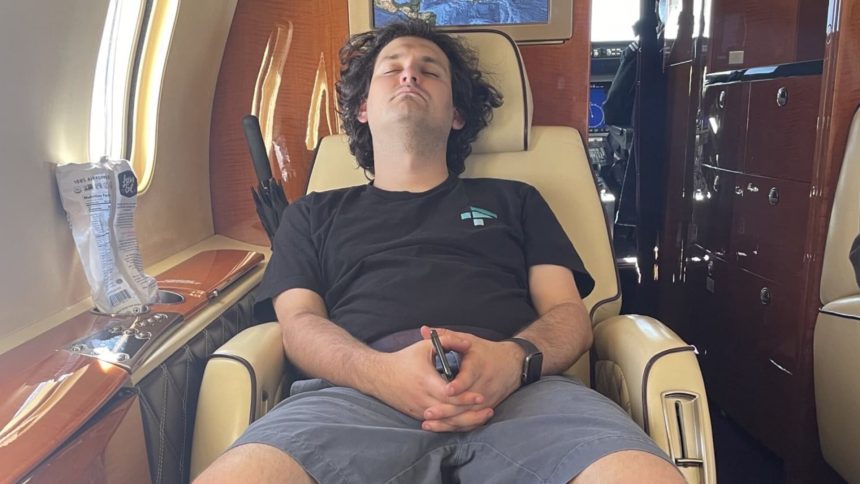As Sam Bankman-Fried prepares to face sentencing next month for his criminal fraud conviction tied to the epic collapse of FTX in 2022, former customers of the crypto exchange have reasons to believe they could actually recoup their money.
Bankman-Fried, who could spend the rest of his life behind bars, was found guilty in November on seven criminal counts after roughly $10 billion in customer funds from his company went missing. Some of that money went to pay for Bankman-Fried’s lavish lifestyle, but much of it went towards other investments that have, of late, appreciated dramatically in value.
Lawyers representing the bankruptcy estate of FTX told a judge in Delaware last week that they expect to fully repay customers and creditors with legitimate claims. Bankruptcy attorney Andrew Dietderich, who works with FTX’s new leadership team, said “there is still a great amount of work and risk” ahead in getting all the money back to clients, but that the team has a “strategy to achieve it.”
It’s a welcome development for the many thousands of customers (reportedly up to a million) who collectively lost billions of dollars in FTX’s collapse 15 months ago, when the crypto exchange spiraled into bankruptcy in a matter of days. Given the lightly regulated and unsecured nature of FTX — and the crypto industry at large — those clients faced the real possibility that the vast majority of their money had evaporated. Plenty of failed hedge funds and lenders lost virtually everything during the 2022 crypto winter.
Bankman-Fried never believed his company’s situation was that dire.
Even as regulators and federal prosecutors unearthed evidence showing that the 31-year-old entrepreneur and his top lieutenants had been pilfering billions of dollars from customer wallets for years, Bankman-Fried insisted that all the money was still somehow accessible.
“FTX US remains fully solvent,” Bankman-Fried wrote in a Substack post on Jan. 12, 2023, while he was under house arrest at his parents’ home in Palo Alto, California. He said the exchange “should be able to return all customers’ funds.”
In some ways, his narrative appears to be proving true.
For months, FTX’s new CEO, John Ray III, and his team of restructuring advisors have been clawing back cash, luxury property, and crypto, as well as tracking down missing assets. They’ve already collected more than $7 billion, and that doesn’t include valuables like $26 million in gifts and property to Bankman-Fried’s parents, or the $700 million handed over to K5 Global and founder Michael Kives, who invested FTX cash in companies like SpaceX. Some of those investments have seen a precipitous rise in value.
FTX had been negotiating with bidders about a potential reboot of the company, but those efforts were scrapped last month.
Braden Perry, who was once a senior trial lawyer for the Commodity Futures Trading Commission, FTX’s only official U.S. regulator, told CNBC that the decision to repay users in full came after “the abandonment of efforts to restart the FTX crypto exchange,” in favor of “a focus on liquidating assets to make customers whole.”
Getting actual money back in the hands of customers still remains a challenge. While a lot of the value has been recouped and more is to come, divvying up large amounts of cash is a complex process in bankruptcies, particularly when so much of the money is in non-traditional and illiquid assets.
Even Ray was doubtful at the beginning of the process, noting in late 2022 that, “At the end of the day, we’re not going to be able to recover all the losses here.”
‘Sam coins’ soar
What Ray wasn’t banking on was a huge market rebound. When he made those remarks, crypto was mired in a bear market, with bitcoin trading at around $16,000. It’s now above $47,000.
In September, the bankruptcy team released a status report showing that FTX had $3.4 billion worth of digital assets, with over $1.1 billion coming from its Solana investment.
Solana fits into a category of so-called “Sam coins,” a group that also includes Serum, a token created and promoted by FTX and sister hedge fund Alameda Research. After the dust settled from FTX’s bankruptcy, Solana saw a huge run-up in its price, and it continued to rally after the September report. Since the end of that month, it’s spiked fivefold.
Meanwhile, FTX’s bitcoin stash, which was worth $560 million at the time of the September report, is today valued north of $1 billion.
Bankman-Fried’s investments weren’t limited to crypto. He also used client money to back startups like Anthropic, the artificial intelligence company founded by ex-OpenAI employees. FTX invested $500 million in Anthropic in 2021, before the generative AI boom. Anthropic’s valuation hit $18 billion in December 2023, which would value FTX’s roughly 8% stake at about $1.4 billion.
During Bankman-Fried’s criminal trial in New York, Judge Lewis Kaplan denied the defense’s request that it be permitted to say that FTX’s investment in Anthropic was a smart bet. The bankruptcy estate of FTX has been looking to sell its Anthropic stake, according to a court filing this month.
In his biography on Bankman-Fried titled “Going Infinite,” Michael Lewis said he was told by an investor interested in bidding for the venture portfolio that “if it was sold intelligently, it should go for at least $2 billion.” Lewis, who published his book late last year, wrote that, based on his back-of-the-envelope math, the $7.3 billion that Ray’s team had come up with didn’t include Serum, some large clawbacks and other venture investments that had appreciated in value.
For FTX customers, being made whole, according to a judge’s ruling, means getting the cash equivalent of what their crypto was worth in November 2022. In other words, they’re not seeing any of the upside of FTX’s investments or being given virtual coins that would allow them to cash out at higher valuations.
Still, some investors have found a way to participate in the FTX’s ongoing odyssey. The market for FTX IOUs lit up last year as it became clear that the bankruptcy estate was cobbling together a lucrative portfolio. One financial firm that had lost around $100 million initially sold its FTX debt for 6 cents on the dollar in a new secondary market out of concern that he may never get a better deal. As of December, those claims were going for more than 70 cents on the dollar.
If customers are eventually made whole, that could play a big role in Bankman-Fried’s appeal, likely following his sentencing, which is set to take place in Brooklyn on March 28. Perry said it could also affect how the judge handles sentencing in the first place.
“Under the federal sentencing guidelines, and even assuming no monetary loss, SBF still faces at least 70 months in prison based on his base level offense, number of victims, sophisticated means, and leadership role,” Perry said.
The massive losses that were originally expected would suggest 30 to years to life, Perry added.
Renato Mariotti, a former prosecutor in the U.S. Justice Department’s Securities and Commodities Fraud Section, told CNBC that judges typically consider the amount of restitution paid to victims at sentencing.
“If the victim is made whole, that is a big plus for the defendant,” said Mariotti. He noted, however, that the extent of the fraud coupled with Bankman-Fried’s false testimony and violation of bond conditions could limit the reduction.
“I usually advise clients to pay restitution before sentencing if at all possible,” Mariotti said.
WATCH: Former SEC Chari discusses Bankman-Fried guilty verdict
Read the full article here




